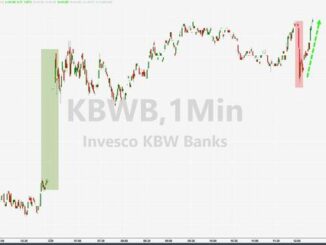
Unrealized losses in the US banking system are once again on the rise, according to new numbers from the Federal Deposit Insurance Corporation (FDIC).
In its Quarterly Banking Profile report, the FDIC says banks are now saddled with more than half a trillion dollars in paper losses on their balance sheets, due largely to exposure to the residential real estate market.
Unrealized losses represent the difference between the price banks paid for securities and the current market value of those assets.
Although banks can hold securities until they mature without marking them to market on their balance sheets, unrealized losses can become an extreme liability when banks need liquidity.
“Unrealized losses on available-for-sale and held-to-maturity securities increased by $39 billion to $517 billion in the first quarter. Higher unrealized losses on residential mortgage-backed securities, resulting from higher mortgage rates in the first quarter, drove the overall increase. This is the ninth straight quarter of unusually high unrealized losses since the Federal Reserve began to raise interest rates in first quarter 2022.”
The FDIC also says that the number of lenders on its Problem Bank List rose last quarter. According to the agency, these banks are on the brink of insolvency due to financial, operational, or managerial weakness or a combination of such issues.
“The number of banks on the Problem Bank List, those with a CAMELS composite rating of ‘4’ or ‘5’ increased from 52 in fourth quarter 2023 to 63 in first quarter 2024. The number of problem banks represented 1.4% of total banks, which was within the normal range for non-crisis periods of 1% to 2% of all banks. Total assets held by problem banks increased $15.8 billion to $82.1 billion during the quarter.”
While the FDIC says that the health of the US banking system is at no imminent risk, it warns that persistent inflation, volatile market rates and geopolitical concerns continue to put pressure on the industry.
“These issues could cause credit quality, earnings, and liquidity challenges for the industry. In addition, deterioration in certain loan portfolios, particularly office properties and credit card loans, continues to warrant monitoring. These issues, together with funding and margin pressures, will remain matters of ongoing supervisory attention by the FDIC.”
Take the Survey at https://survey.energynewsbeat.com/
ENB Top News
ENB
Energy Dashboard
ENB Podcast
ENB Substack






